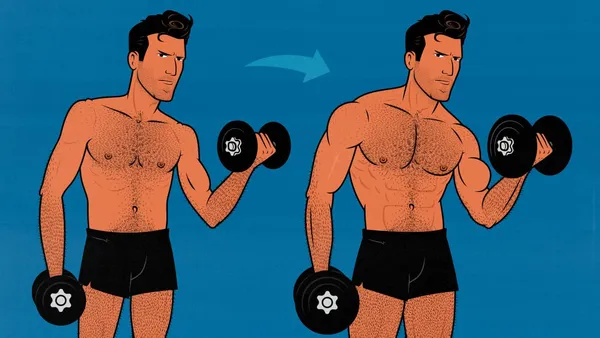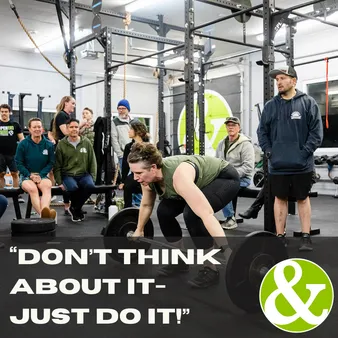Table of Contents
When observing the physiques of athletes, it's common to notice differences in muscle development based on their chosen sport or training regimen. Calisthenics athletes, known for their impressive bodyweight strength and control, often exhibit a physique that contrasts with that of weightlifters, particularly in the area of the trapezius muscles, or "traps." On kizworld, we delve into the reasons behind this phenomenon, exploring how the focus on bodyweight exercises and the principles of calisthenics training can influence the size and strength of the traps. Join us as we unravel the mystery of why calisthenics athletes have smaller traps and what they can do to enhance this often-overlooked muscle group.
Key Takeaway | Explanation |
|---|---|
Bodyweight Focus | Calisthenics training emphasizes bodyweight exercises, which may not target traps as intensely as weightlifting. |
Training Differences | The contrast in training methods between calisthenics and weightlifting leads to different muscle development, including traps. |
Trap Development Strategies | Calisthenics athletes can incorporate specific exercises and variations to enhance trap size and strength. |
Personalized Approach | Tailoring training to individual goals allows for balanced development across all muscle groups, including traps. |
Understanding Calisthenics Athletes and Their Trapezius Muscles
The Traps: A Unique Muscle Group
Have you ever noticed that some athletes have big, strong muscles on their shoulders and upper back? Those are called "traps," short for trapezius muscles. They're like the superhero cape of your body, helping you move your shoulders and neck. But why do calisthenics athletes, who are super strong with their bodyweight exercises, sometimes have smaller traps compared to weightlifters? It's like comparing a gymnast to a wrestler – they both have strong bodies, but they train differently!
Calisthenics: The Bodyweight Advantage
Calisthenics athletes are like human jungle gyms – they can do amazing things with just their own bodies! They focus on exercises like pull-ups, push-ups, and handstands. These moves are fantastic for building overall strength and flexibility, but they don't always target the traps as much as exercises with weights do. It's like how playing soccer helps you run fast, but it might not make you a great swimmer. Each sport has its own special benefits.
The Weightlifting Contrast
Now, let's talk about weightlifters. They lift heavy things like barbells and dumbbells, which can really work those traps! Exercises like shrugs and deadlifts are like giving your traps a big hug, making them grow stronger and bigger. It's like how lifting bags of groceries can make your arms feel tired, but also stronger over time. So, when you see a weightlifter with big traps, it's because their workouts are like a special trap-building program!
In the world of fitness, it's all about finding what works best for you. Calisthenics athletes might have smaller traps, but they're still incredibly strong and agile. It's like having a toolbox with different tools for different jobs. And remember, whether you're doing calisthenics or weightlifting, the most important thing is to have fun and stay healthy!
The Role of Bodyweight Exercises in Trap Development
Ever wonder why those calisthenics wizards don't have Hulk-sized traps? It's like asking why a marathon runner doesn't have sprinter's legs. Calisthenics is all about bodyweight magic, and while it makes you super strong and flexible, it's not always the best potion for trap growth. Think of it like this: if you spend all day playing hopscotch, you'll be great at hopping, but you won't suddenly become a basketball star just because you can jump!
But don't get me wrong, bodyweight exercises are like the Swiss Army knife of workouts. They can target almost every muscle, including your traps, just not as directly as those weightlifting spells. For instance, pull-ups are like a trap-friendly dance, but they also involve your back and arms. It's like trying to eat just one chip – you end up munching on the whole bag!
- Pull-ups: The Trap-Friendly Dance
- Push-ups: A Full-Body Symphony
- Handstands: The Balancing Act
So, if you're a calisthenics ninja aiming for trap glory, you might need to add a few extra moves to your routine. Think of it as a secret ingredient to your trap-building recipe. You could try some shoulder shrugs with a backpack filled with books or even some neck harness exercises if you're feeling extra creative. It's like adding sprinkles to your ice cream – it just makes everything better!
Remember, the key to trap growth, whether you're a calisthenics champion or a weightlifting warrior, is consistency and variety. It's like learning a new language – the more you practice, the better you get. So, mix up your bodyweight moves, add some spice to your workout, and watch those traps grow. And hey, if all else fails, just tell everyone your traps are the stealthy kind – they only come out when you need them most!
The Role of Bodyweight Exercises in Trap Development
Comparing Calisthenics and Weightlifting: Traps Perspective
Ever wonder why your calisthenics buddy's traps look different from your weightlifting cousin's? It's like comparing a bird's wings to an airplane's – they both fly, but they do it in different ways! Calisthenics is all about bodyweight moves, like swinging on the monkey bars, while weightlifting is more like picking up heavy boxes. Both can make you strong, but they target muscles differently, especially those trap muscles on your upper back.
Weightlifting exercises, like shrugging heavy weights or doing deadlifts, are like giving your traps a big bear hug. They work those muscles really hard, making them grow bigger and stronger. On the other hand, calisthenics moves, like pull-ups or handstands, work your whole body, but they might not squeeze your traps as much. It's like eating a balanced meal – you get a bit of everything, but not a huge portion of one thing.
Training Style | Traps Focus |
|---|---|
Calisthenics | Whole-body exercises with less direct trap focus |
Weightlifting | Direct trap exercises with heavy weights |
But don't worry, calisthenics champs! You can still give your traps some love. Try adding moves like handstand shoulder shrugs or weighted pull-ups to your routine. It's like mixing veggies into your pasta – you get the best of both worlds! And remember, whether you're a calisthenics wizard or a weightlifting warrior, the most important thing is to have fun and stay healthy while you train.
Comparing Calisthenics and Weightlifting: Traps Perspective
How Calisthenics Athletes Can Enhance Trap Size and Strength
Ever feel like your traps are the shy kid in class, always hiding in the back? Well, don't worry, because there are ways to help them come out of their shell! Just like how you can make friends by joining clubs or playing games, calisthenics athletes can give their traps some extra attention with a few clever moves. For instance, you can try doing handstand push-ups against a wall, which is like giving your traps a high-five while upside down!
Another fun trick is to wear a weighted backpack while doing pull-ups. It's like adding extra toppings on your pizza – it makes the whole thing more exciting and challenging! And if you're feeling extra adventurous, you can even try some neck harness exercises with a resistance band. It's like giving your traps a secret handshake that only the cool kids know about. Remember, the key to making your traps grow and strong is to mix up your routine and keep things interesting, just like how you'd want your favorite TV show to always have new twists and turns!
Exercise | Traps Focus |
|---|---|
Handstand Push-ups | Targets traps while upside down |
Weighted Pull-ups | Adds extra challenge with a backpack |
Neck Harness Exercises | Secret handshake for traps |
So, whether you're a calisthenics wizard or just starting out, remember that there's always room for growth. Just like how you can learn new things every day, your traps can also get stronger and bigger with the right moves. Keep experimenting, stay curious, and have fun along the way – and soon enough, your traps will be the talk of the playground!
How Calisthenics Athletes Can Enhance Trap Size and Strength
Final Thought
In conclusion, the size and development of traps in calisthenics athletes are a reflection of their training focus on bodyweight exercises and functional strength. While weightlifting may lead to more pronounced traps due to the nature of the exercises, calisthenics athletes can still work on their trapezius muscles through targeted bodyweight movements and strategic programming. Understanding the nuances of different training methods allows athletes to tailor their workouts to achieve their desired physique and performance goals. As we've explored on Kizworld, with the right approach, calisthenics athletes can indeed build impressive traps that complement their overall athleticism.